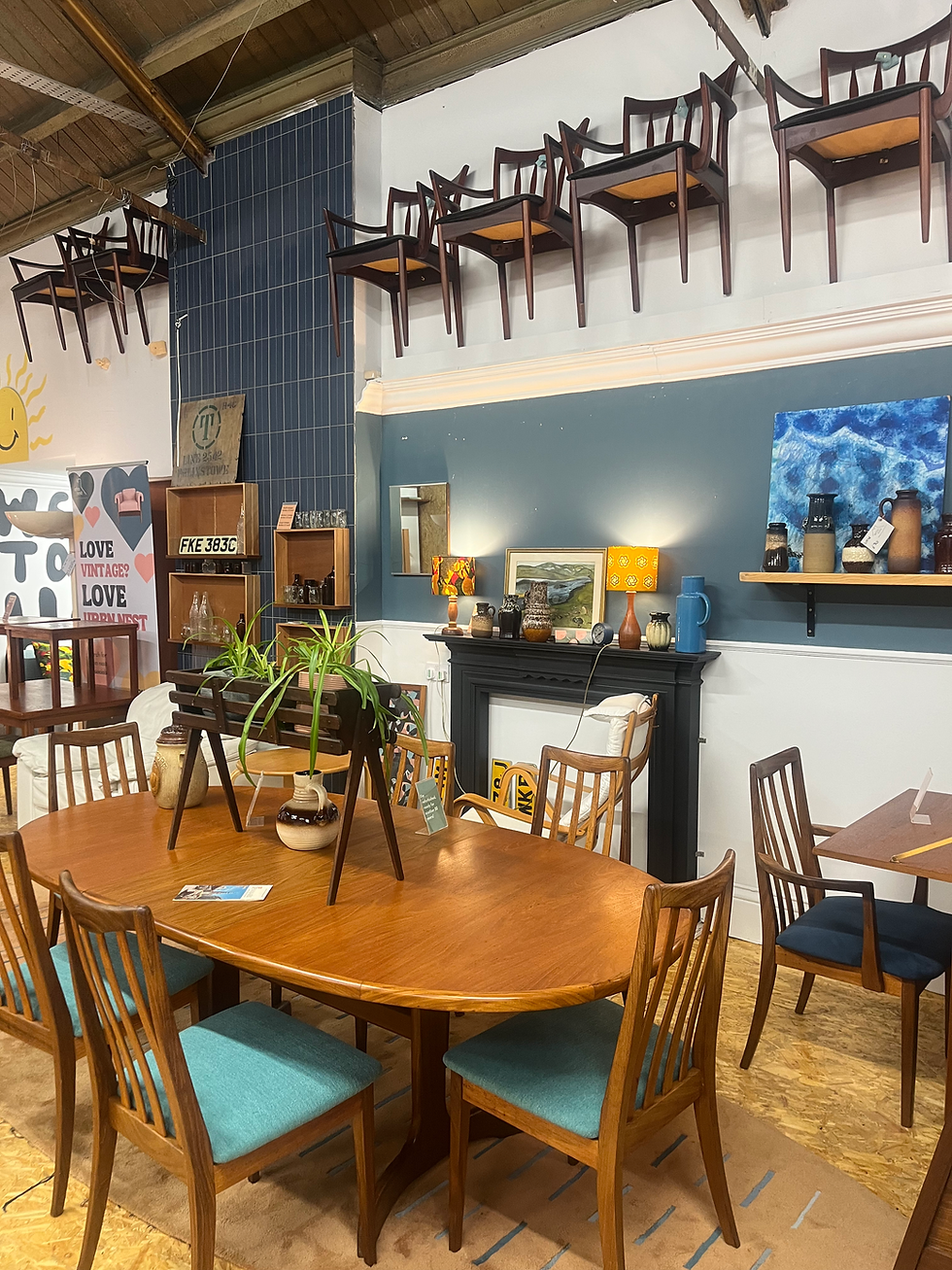Saving a huge G Plan sideboard
- Ell
- Jan 22, 2024
- 3 min read
Updated: Oct 20, 2024
How we rescued something destined for landfill and turned it into a piece worthy of your home
At urbn nest we're passionate about reducing landfill waste and we're also passionate about great interiors too. We often undertake rescue missions for pieces many people thought we're too far gone.
In late 2023 we acquired a huge G Plan Sierra highboard which was in need of some TLC to say the least. It was a strange one, because most of it was in fantastic vintage condition, far better than most. So what was the problem?
Well for starters, it only had 2 legs. It had a solid teak base comprising of four legs. The problem is when one leg breaks (usually from dragging) it puts stress on the rest of the base, especially when a piece this weight.
One of the handles had broken in half, although the other half was actually in the drawer so I knew that could be glued back.
The third problem was a drop down door was damaged and would have been tricky to repair.
For a lot of people this would probably be terminal damage, which is such a shame as it's still such a stylish, practical, quality piece of furniture. The good news is that we had a clear plan even before we picked it up.

Firstly we removed the existing base and legs. As with most British furniture they were screwed and glued, so after unscrewing them we used a mallet to ease them away from the bottom of the unit.
We have an extensive parts bin (aka we hoard anything remotely useful from other pieces which might come in handy in future). We picked out a set of solid beech tapered legs and 4 screw plates for them to fit into. These were fitted to the base securely with 5 screws each.
It was carefully lifted onto its new legs, and was now VERY sturdy. The legs may look slender but they're very strong, especially when fixed to strong metal plates! They were later lacquered for protection, this also gave them a slightly darker colour than the photos suggest.
Next for the handle. We were lucky that the handle fragment was still in the drawer. These inset handles are glued deep into the wood (rather than just onto the surface) and would have been almost impossible to try and replace without damaging the the door. Luckily it had been a fairly clean break and nothing was missing.
The handle was glued back together using wood glue, with any excess wiped off while it was wet which makes it much easier to clean up! Once dried it was pretty strong, and we fine sanded this down until silky smooth and gave the dry wood a quick wipe on, wipe off coat of oil. The sanding dust and oil made a paste which helped to disguise the tiny join marks, and now it's genuinely difficult to see where it's been glued without being up close.

We then fitted another shelf to the left hand side where the drop down door was. This was because it was a better use of the space, and it would disguise some of the old holes where the door brackets were. Again, we have a number of old shelves rescued from other pieces, as well as the little plastic shelf supports.

We then deep cleaned the entire unit. We always use a mild detergent like fairy liquid and warm water. This lifts any grease and dust - think about all the layers of polish and dust which have probably never been fully removed over the last 50 years! We use something with slight abrasion like a dishcloth, which lifts dirt well while not scratching the surface. It's amazing (slightly gross) what colour the water goes, and how much more vibrant it looks afterwards.

Finally, we just cleaned and polished the inside up, and deep cleaned the felted cutlery drawer.

Overall we're very proud we were able to not only rescue this, but refurbish it to make sure it can live for another 50 years.







Comments